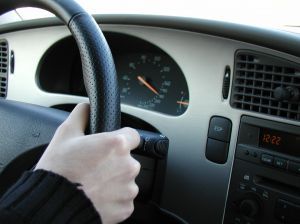Although expert witnesses are not required in Naples car accident lawsuits as they are in medical malpractice cases, use of an expert witness can sometimes make or break a case.

However, in order to be considered an “expert,” a person must meet certain criteria for the purported field of study. Last year, Florida adopted a more stringent standard for expert witnesses. Previously, the state adhered to the Frye standard, which was established by the 1923 case of Frye v. U.S. This principle held that scientific theory, principle or procedure from which the expert witness testimony was derived had to be sufficiently grounded or generally accepted in the particular field of study.
The problem was that while general acceptance of peers in the scientific community was important, the principle lacked consideration for the individual’s qualifications as an expert. This resulted in the introduction and passage of House Bill 7015, which required Florida to join 40 other states in adopting the Daubert standard for admissibility of expert witness testimony. This more stringent standard weighs whether the theory or technique in question can be tested, whether it has been subjected to peer review, whether there is a known or potential error rate, the existence of standards to control its operation, and whether there is widespread acceptance within the relevant scientific community.
In understanding how this change is important to injured victims, we need look no further than Johnston-Forbes v. Matsunaga, a crash case recently before the Washington Supreme Court, which has affirmed adherence to the lesser Frye standard.
In this case, a professional golfer and mother of two was riding in the backseat of her vehicle, between her two young daughters, on the way back to the hotel after the Ladies Professional Golf Association tournament. The vehicle, driven by her husband, was stopped at a red light when it was rear-ended by a Ford Mustang driven by the defendant driver.
Although the plaintiff experienced a headache and stiffening of neck muscles, she did not initially believe her injuries to be especially serious. However, the pain persisted. Her back pain improved, but the pain in her neck did not. Four years after the crash, an MRI revealed the plaintiff suffered a herniated disc in her neck. She was unable to return to the LPGA tour.
She filed suit against the driver, alleging negligence in causing the crash resulted in lasting injuries. Defendant admitted she struck plaintiff’s vehicle, but denied the collision was the cause of the golfer’s injuries.
Among the evidence plaintiff sought to exclude was testimony of defendant’s expert witness. He was not a licensed professional engineer, and the state bars anyone who isn’t licensed as such to testify on engineering matters in court. Further, the witness had only seen pictures of the defendant’s vehicle; he hadn’t actually seen the wreck, and he never looked at images of plaintiff’s vehicle. Finally, plaintiff argued the expert witness had not taken into consideration her precarious body position at the time of the wreck (she was leaning forward, twisted to the right while tending to her daughter).
Defendant countered that the witness had studied numerous similar accidents and published hundreds of papers on biomechanics, specifically as they relate to the low-speed impact crashes. She also indicated he would only discuss biomechanics in general, and would not testify as to plaintiff’s alleged injuries.
The court declined to exclude the testimony, but limited its scope.
A jury returned a verdict in favor of the defendant.
Plaintiff appealed on grounds the expert witness’s testimony should never have been allowed. He was not a medical doctor nor a licensed engineer. He hadn’t examined plaintiff’s vehicle or any photos of it, plus, a basketball hoop had fallen on defendant’s car between the time of the wreck and the time photographs were taken. Finally, the position of plaintiff’s body could have resulted in greater injuries than his testimony might predict.
An appellate court affirmed, as did the Washington Supreme Court.
In its review, the high court justices noted expert testimony is generally accepted if the expert is qualified and the theories are generally accepted by the scientific community, per the Frye standard.
Courts adhering to the Frye standard are given a broader degree of discretion on these matters than those adhering to the Daubert standard. This case illustrates why, in some instances, that could be damaging to plaintiffs.
Call Associates and Bruce L. Scheiner, Attorneys for the Injured, at 1-800-646-1210.
Additional Resources:
Johnston-Forbes v. Matsunaga, Aug. 28, 2014, Washington Supreme Court
More Blog Entries:
Carman v. Tinkes – Traffic Law Violation Doesn’t Automate Fault, Aug. 28, 2014, Naples Car Accident Lawyer Blog
 Florida Injury Lawyer Blog
Florida Injury Lawyer Blog





